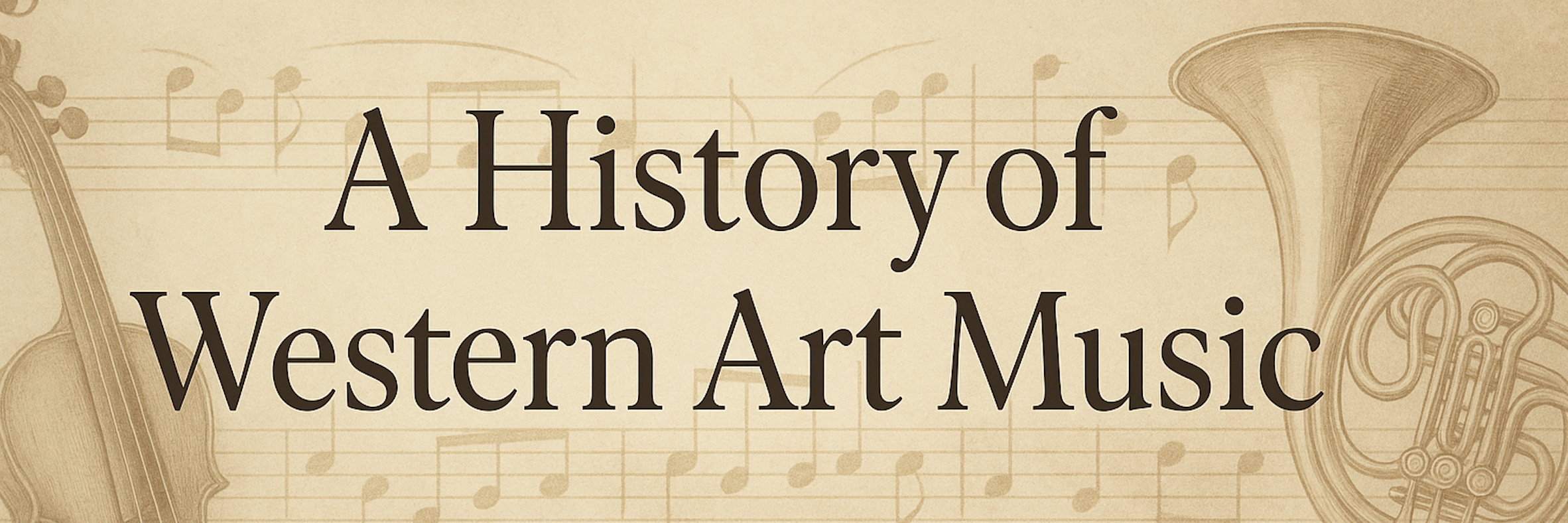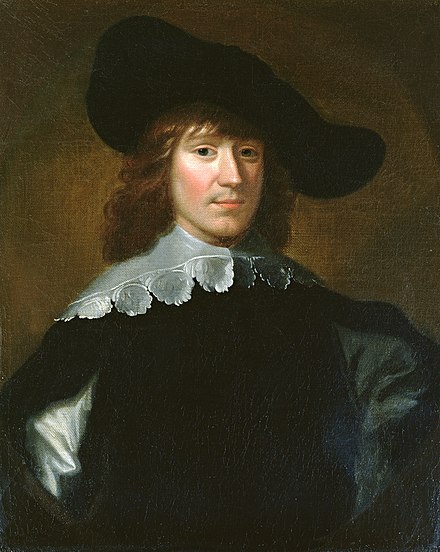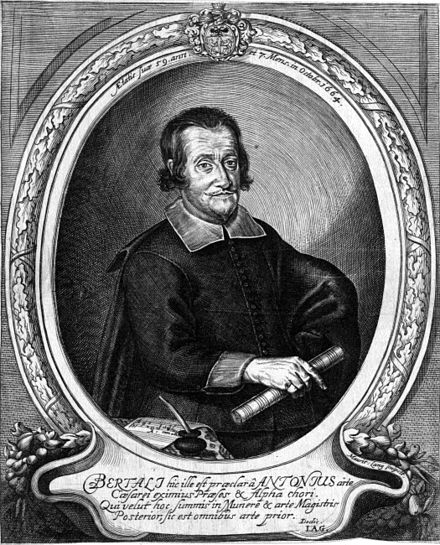Your cart is currently empty!
Composers of the Middle Baroque Era

This companion to Part Three: The Baroque Era is an encyclopedia of composers of the Middle Baroque era in chronological order. The playlist below is a selection of pieces by some of the composers covered in this reference guide. The numbers that appear before the names of compositions in the text below refer to their position in the playlist. There are also separate playlists for each composer which contain all of the recordings available on Spotify barring those that are arrangements for modern instruments, instrumental arrangements of pieces originally scored for voices and the like.
Francesco Cavalli (born Pietro Francesco Caletti-Bruni; 14 February 1602 – 14 January 1676) was a Venetian composer, organist and singer of the early Baroque period. He succeeded his teacher Claudio Monteverdi as the dominant and leading opera composer of the mid 17th-century. A central figure of Venetian musical life, Cavalli wrote more than thirty operas, almost all of which premiered in the city’s theaters. His best known works include Ormindo (1644), Giasone (1649) and La Calisto (1651).
Cavalli was the most influential composer in the rising genre of public opera in mid-17th-century Venice. Unlike Monteverdi’s early operas, scored for the extravagant court orchestra of Mantua, Cavalli’s operas make use of a small orchestra of strings and basso continuo to meet the limitations of public opera houses.
Cavalli introduced melodious arias into his music and popular types into his libretti. His operas have a remarkably strong sense of dramatic effect as well as a great musical facility, and a grotesque humour which was characteristic of Italian opera down to the death of Alessandro Scarlatti. Cavalli’s operas provide the only example of a continuous musical development of a single composer in a single genre from the early to the late 17th century in Venice — only a few operas by others (e.g., Monteverdi and Antonio Cesti) survive. The development is particularly interesting to scholars because opera was still quite a new medium when Cavalli began working, and had matured into a popular public spectacle by the end of his career. More than forty-two operas have been attributed to Cavalli. Manuscript scores of twenty-six are extant.
In addition to operas, Cavalli wrote settings of the Magnificat in the grand Venetian polychoral style, settings of the Marian antiphons, other sacred music in a more conservative manner – notably a Requiem Mass in eight parts, probably intended for his own funeral – and some instrumental music.
- Gli amori d’Apolloe di Dafne, Act 3: “Misero Apollo” (1640)
- La Didone, Act 1: “Alle ruine del mio regno” (Arranged by Christina Pluhar) (1641)
- La Didone, Act 1: “L’alma fiacca svani” (Arranged by Christina Pluhar)
- La virtù de’ strali d’Amore, Act 3: “Che pensi, mio core?” (1642)
- L’Ormindo: Sì, sì, che questa notte (1644)
- Il Giasone, Act 1, Scene 2: “Delizie contenti” (1649)
- La Rosinda, Act 3: “Vieni, vieni in questo seno” (1651)
- La Calisto, Act 2: “Erme, e solinghe cime…Lucidissima face” (1651)
- L’Eritrea, Act 1: “O luci belle” (1652)
- Vespero della Beata Vergine Maria: Antifona: Alma Redemptoris Mater (1656)
- Vespero della Beata Vergine Maria: Hymnus ave maris stella
- Missa 1660: Elevatio
- Ercole amante, Act 4, Scene 7: “Ferma ti prego” (1662)
- Ercole amante, Act 5, Scene 3: “Ah, Nesso mi tradi”
- Pompeo Magno, Act 2: “Cieche tenebre” (1666)
- Eliogabalo, Act 1: “Io resto solo?…Misero, cosi va” (1667)

William Lawes (April 1602 – 24 September 1645) was an English composer and musician of the early Baroque period. Lawes’ instrumental music is typical of the 17th-century genre in England. Intense rhythmical gestures and dissonant harmonies stand in stark contrast with the traditional rules of counterpoint such as practiced by previous composers which were known to Lawes, like William Byrd. His writing style is highly mannered, oft experimental and virtuosic; melodies may be fragmented and altered with varied articulation and accentuation. Lawes was known to be a virtuoso on the lyra viol. There as well his music features chromatic extremes which are not normally encountered in works of the early Baroque. Nevertheless, his works, including two compositions on the cantus firmus In nomine, show that he was aware of the theoretical practices of his day.
He is particularly known for his ensemble dance music, which takes the form of suites called “consort sets,” well appreciated by his contemporaries and successors. Ten of these sets form a fine and varied collection called the Royal Consort, completed in 1635 for Charles I of England. Many of Lawes’ consort sets seem to have been composed as functional music or pedagogical pieces.
- X. Consort Set A 6 in C Minor: Fantazia no.
Antonio Bertali (March 1605–17 April 1669) was an Italian composer and violinist of the middle Baroque period. Bertali’s compositions are in the manner of other northern Italian composers of the time and include operas, oratorios, a large number of liturgical works, and chamber music. Particularly his operas are notable for establishing the tradition of Italian opera seria in Vienna. Approximately half of his work is now lost. The “Chaconne” or Ciaccona is perhaps his best-known work.
- XII Sonate a tre o quattro strumenti e basso: Sonata III a 3
- Ciaccona per violino solo (1662 or earlier)
- La Maddelena, Part 3: Se nutri di speranza

